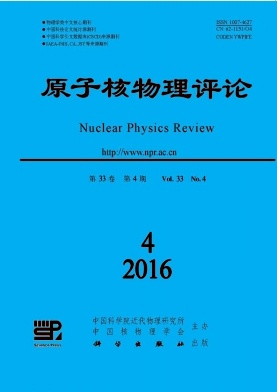|
[1]
|
WINKLER G S. J Cell Physiol, 2010, 222(1):66. |
|
[2]
|
PREVOT D, MOREL A P, VOELTZEL T, et al. J Biol Chem, 2001, 276(13):9640. |
|
[3]
|
BERTHET C, GUEHENNEUX F, REVOL V, et al. Genes Cells, 2002, 7(1):29. |
|
[4]
|
BOGDAN J A, ADAMS-BURTON C, PEDICORD D L, et al. Biochem J, 1998, 336(Pt 2):471. |
|
[5]
|
ZHU R, ZOU S T, WAN J M, et al. Oncol Rep, 2013, 30(5):2137. |
|
[6]
|
PREVOT D, VOELTZEL T, BIROT A M, et al. J Biol Chem, 2000, 275(1):147. |
|
[7]
|
IWAI K, HIRATA K, ISHIDA T, et al. Biochem Biophys Res Commun, 2004, 316(3):628. |
|
[8]
|
WU X, DING N, HU W, et al. Radiat Oncol, 2014, 9:179. |
|
[9]
|
ZHU R, LI W, XU Y, et al. Oncol Rep, 2015, 34:3017. |
|
[10]
|
WU X, HUA J, DING N, et al. Nuclear Physics Review, 2014, 31(4):533.(in Chinese) (吴鑫, 华君瑞, 丁楠, 等. 原子核物理评论, 2014, 31(4):533.) |
|
[11]
|
SANTIVASI W L, XIA F. Antioxid Redox Signal, 2014, 21(2):251. |
|
[12]
|
ZHOU B B, ELLEDGE S J. Nature, 2000, 408(6811):433. |
|
[13]
|
HANISCH A, SILLJE H H, NIGG E A. EMBO J, 2006, 25(23):5504. |
|
[14]
|
LU Z, LI Y, TAKWI A, et al. EMBO J, 2011, 30(1):57. |
|
[15]
|
BAKKER W J, BLAZQUEZ-DOMINGO M, KOLBUS A, et al. J Cell Biol, 2004, 164(2):175. |
|
[16]
|
JUUSELA H, MALMIO K, ALFTHAN O, et al. Scand J Urol Nephrol, 1977, 11(3):277. |
|
[17]
|
DESCHAVANNE P J, FERTIL B. Int J Radiat Oncol Biol Phys, 1996, 34(1):251. |
|
[18]
|
TONG Z, JIANG B, WU Y, et al. Int J Mol Sci, 2015, 16(7):14511. |
|
[19]
|
YANG Q, XU E, DAI J, et al. Toxicol Lett, 2014, 228(3):147. |
|
[20]
|
COPPOLA V, MUSUMECI M, PATRIZII M, et al. Oncogene, 2013, 32(14):1843. |
|
[21]
|
LIU M, WU H, LIU T, et al. Cell Res, 2009, 19(7):828. |
|
[22]
|
MAO B, XIAO H, ZHANG Z, et al. Mol Med Rep, 2015, 12(4):4917. |
|
[23]
|
LU K, LIU C, TAO T, et al. FEBS Lett, 2015, 589(13):1485. |
|
[24]
|
CAO G, HUANG B, LIU Z, et al. Biochem Biophys Res Commun, 2010, 396(4):978. |
|
[25]
|
CHO I J, LEE A K, LEE S J, et al. Free Radic Biol Med, 2005, 39(11):1523. |
|
[26]
|
YU Z, CHEN T, HEBERT J, et al. Mol Cell Biol, 2009, 29(11):2982. |
|
[27]
|
LIU C, TAO T, XU B, et al. Oncology Letters, 2015, 10:619. |






 甘公网安备 62010202000723号
甘公网安备 62010202000723号 DownLoad:
DownLoad: